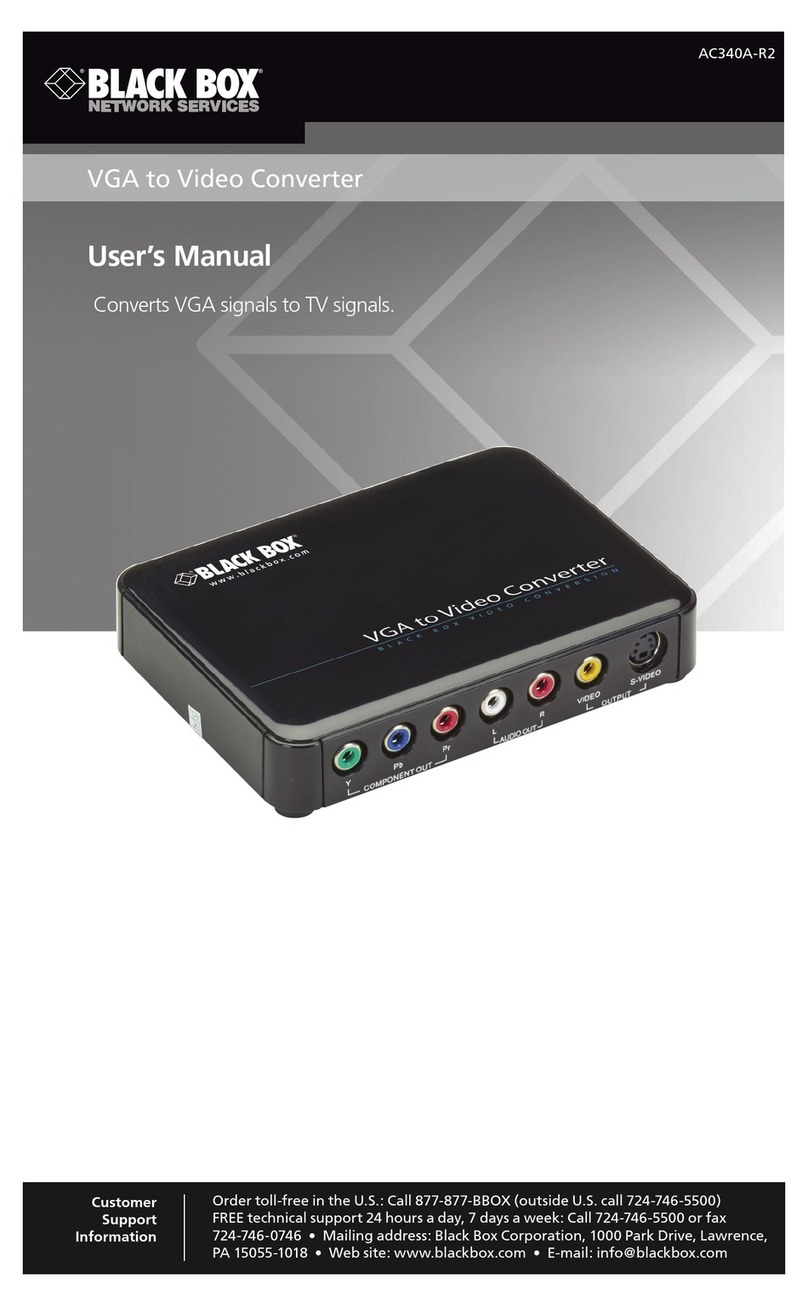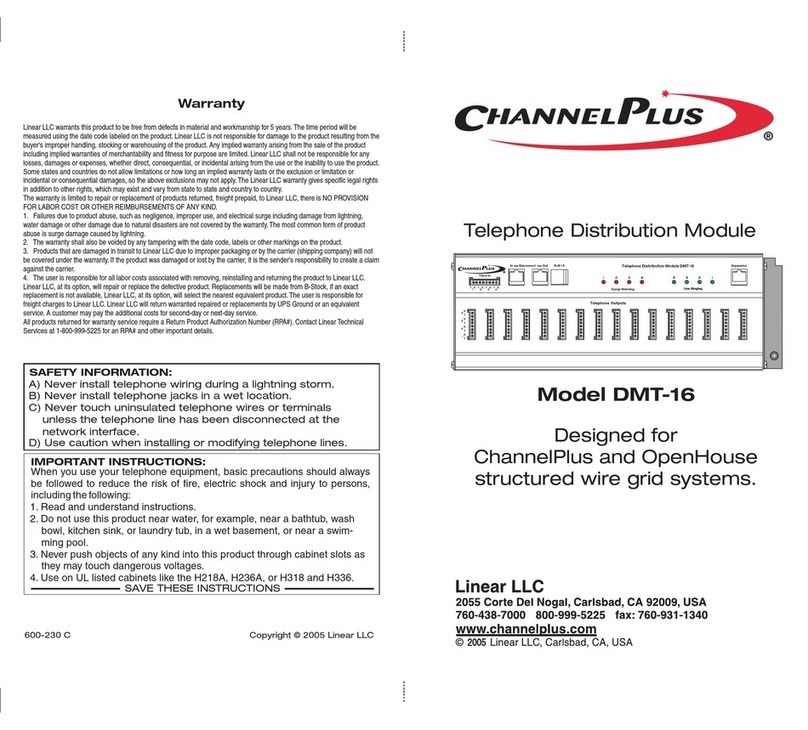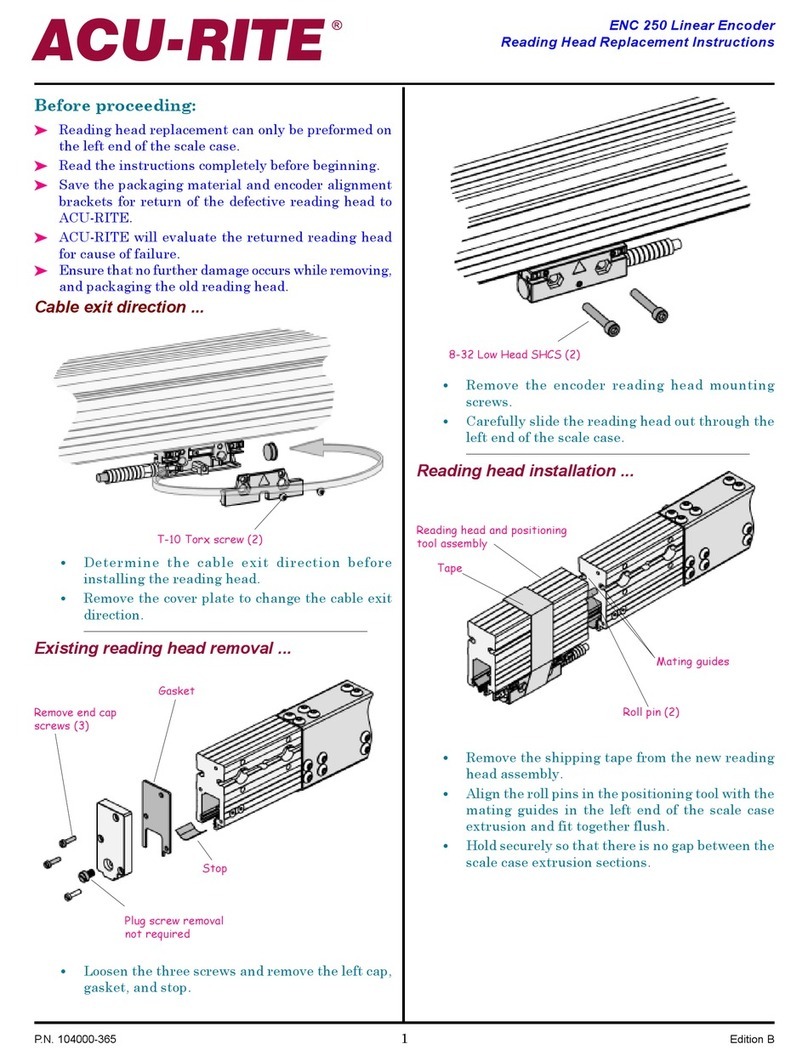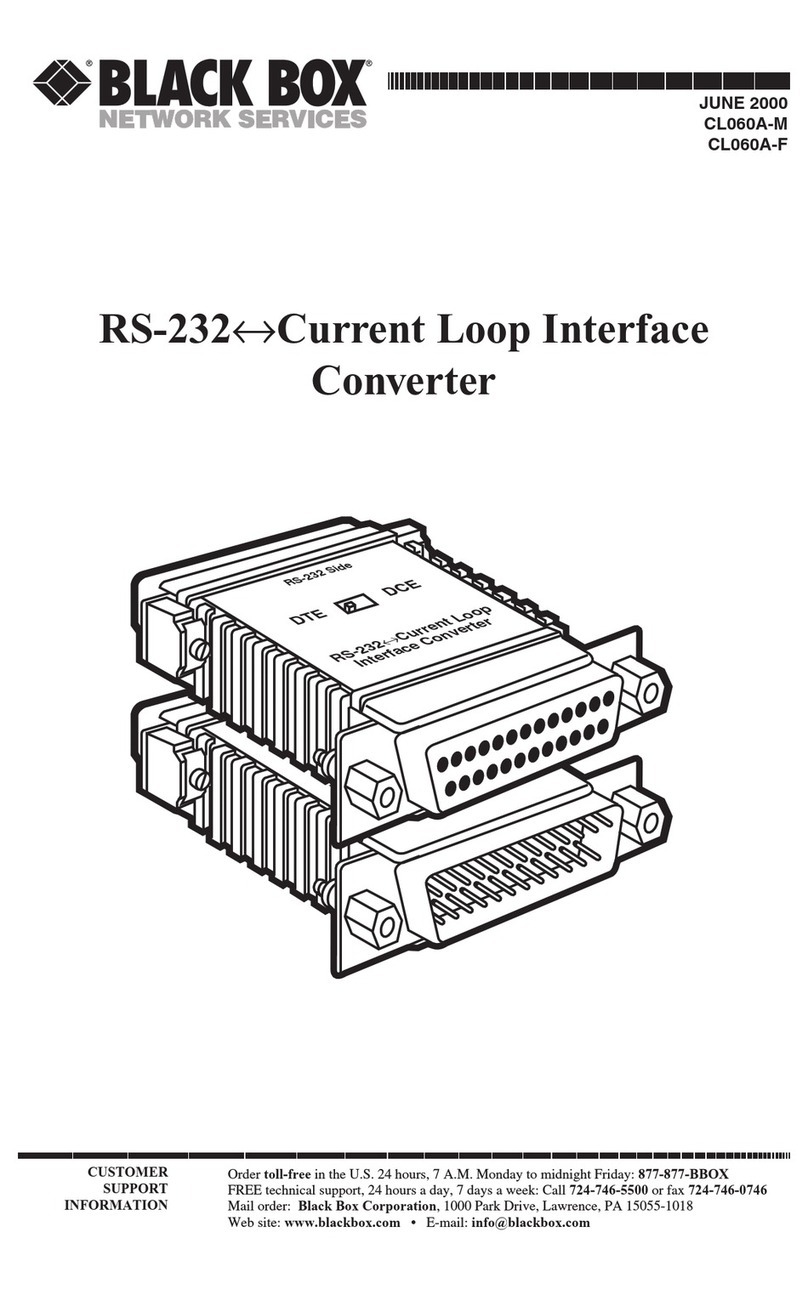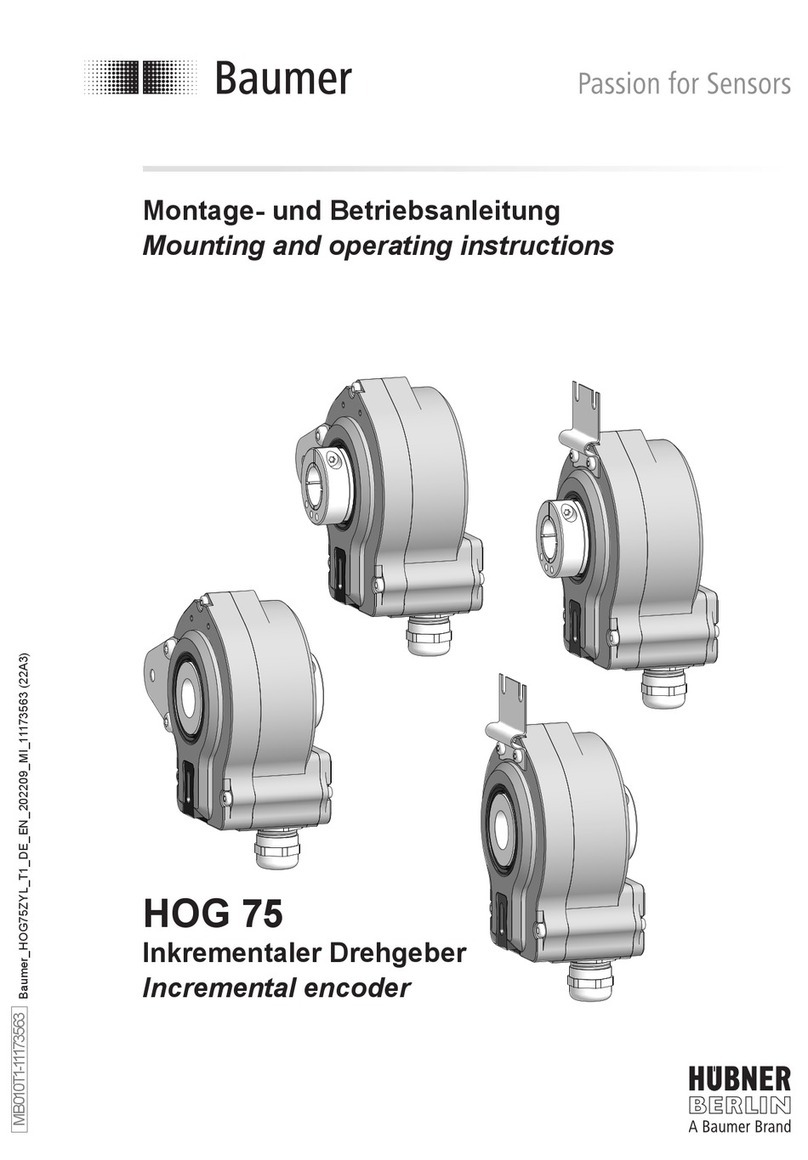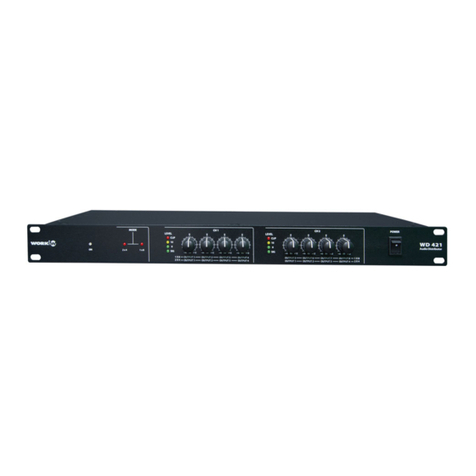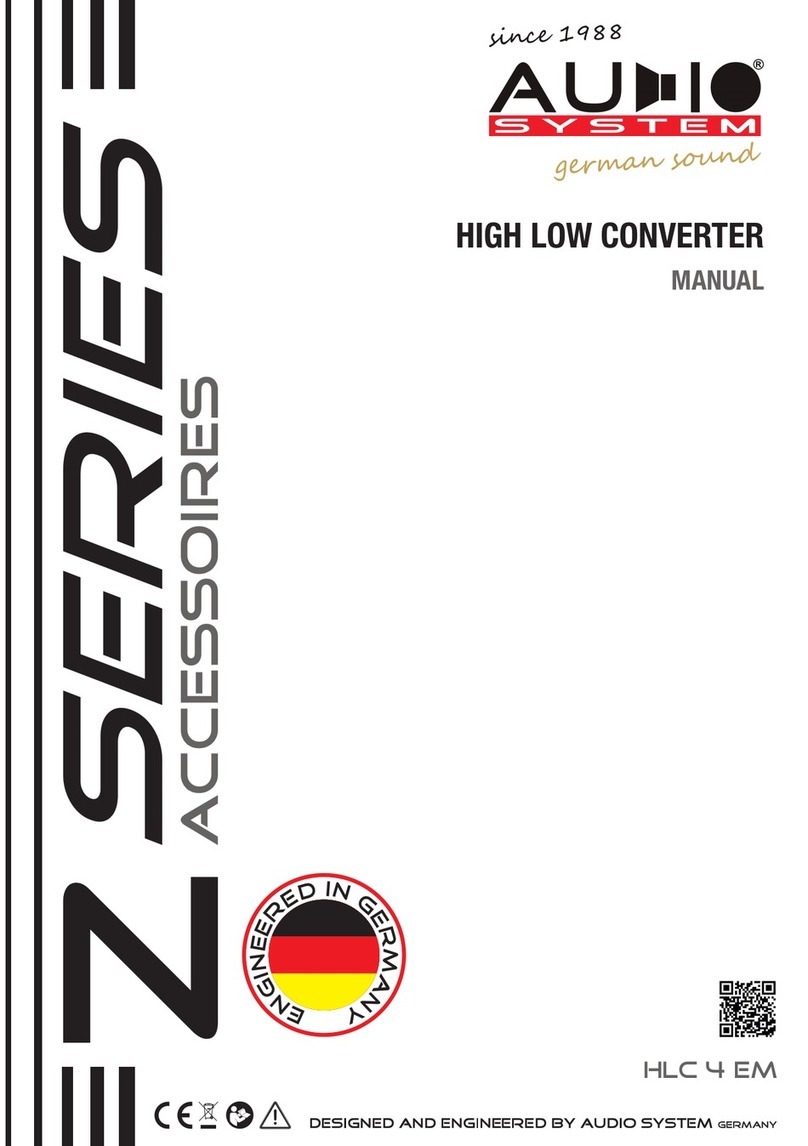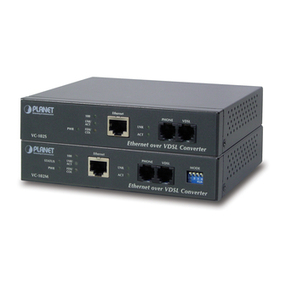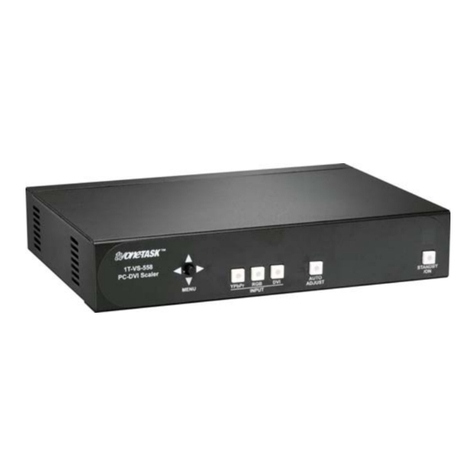Racal Instruments RA-237B User manual

Restoring a RACAL RA-237B Low Frequency Converter – Gerry O’Hara
I purchased and restored a RACAL
RA-117 a couple of years ago.
This radio has been working very
well since the restoration, but I
found that it only received signals
down to around 750kHz, below
which I receive mainly spurii and
noise – not too surprising, as the
receiver is only designed to receive
down to 1MHz at full spec and
below this with ‘reduced
performance’. I knew that a low
frequency (LF) converter was
available for this receiver,
designated the ‘RA-237B’ and
decided to look-out for one of
these to mate with my receiver.
Finding an RA-237B
I had been keeping
an eye on Ebay
and other potential
sources for one of
these (fairly
scarce) units over
the past couple of
years and finally
found one for sale
on Ebay - ‘locally’
here in British
Columbia (actually
in the Okanagan),
which meant I would still be incurring some shipping cost (but not much). I won the auction and
secured the unit for a reasonable cost. On arrival, the unit was well-packed and in pretty good
shape, with a full tube complement and, thankfully, a copy of the RA-237B manual (which is not
readily available for free download on the web).
The RA-237 v the RA-137 v the RA-37 and the ‘B’
The RA-237 unit is a modification of the RA-137 unit which is
designed for the RA-17 receiver, the primary difference
between the two models is the addition of a 2MHz crystal notch filter to help remove remnants
of any 2MHz local oscillator signal due to any imbalance in the balanced mixer in the RA-237,

RACAL RA-237B Gerry O’Hara
2
as the RA-117 does not include a tuneable 2 -3MHz bandpass filter. The RA-37 has simpler pre-
selector circuitry and no tuning dial. The ‘B’ suffix designation indicates the unit incorporates
US tube types with some associated minor circuit changes and different RF connectors.
Simplified Circuit Description
The RA-237B takes the 1MHz crystal master oscillator signal from the RA-117 and doubles this
to 2MHz in a harmonic generator using a 6AU6 operating in a non-linear fashion, followed by a
50kHz wide bandpass filter at 2MHz. The clean 2MHz local oscillator signal at around 1v p-p is
fed to a balanced mixer comprising two 6AS6 tubes. The incoming RF signal is amplified by a
6BA6 (its gain controlled by the RA-117 AGC circuit), before being fed through a 1MHz low-
pass filter to the balanced mixer. A switchable attenuator is provided, together with a six band
pre-selector tuned circuit arrangement, plus a wideband (aperiodic) input setting. The latter can
have a 500kHz low-pass filter inserted if desired to block strong signals above 500kHz. The
2MHz local oscillator signal is cancelled-out in the balanced mixer and the product of this and
the incoming signal from the RF amplifier is fed to a 6AU6 acting as a cathode-follower to
provide the low-impedance IF output needed to feed the tuneable 2-3MHz input on the RA-117.
As noted above, a simple 2MHz crystal notch filer is provided between the balanced mixer and
cathode-follower stages. The unit includes a transformer for powering the tube heaters, however,
the HT (around 200v) is derived from the RA-117 – this is necessary to allow simple switching
of the HT to the unit or to the RA-117 front-end circuits. The HT voltage to the balanced mixer
is stabilized at 150v by an OA2 tube. A block diagram of the RA-237B and how it connects into
the RA-117 receiver circuit is provide below for reference.

RACAL RA-237B Gerry O’Hara
3
Front-panel controls on the RA-237B are minimal: power on/off, RA-117 range (HF/LF),
attenuator, and pre-selector bandswitch and tuning.
Mechanical Construction
The unit is designed to take up only 3.5” height in 19” rack, either above or below the RA-117
receiver. This low-profile makes for an interesting construction challenge. To achieve this, the
tubes have to be mounted horizontally. This was done by designing a low-profile chassis frame
that has the harmonic generator located to the rear in a screened box with the 6AU6 facing
inwards and the remaining circuitry located at the front of the frame (photo, below), its tubes also
facing inwards:
this arrangement
results in the
tubes receiving
good (vertical)
ventilation and
the passive circuit
elements
remaining cool.
The (filament)
transformer is a
low-profile unit
also mounted at
the rear of the
chassis (photo,
below). Passive
components are
mounted on posts
inserted through
Paxolin
(phenolic) boards, allowing easy replacement of components. The pre-
selector tuning is by a mechanical arrangement (gears
and dial cord), with the selected band (or ‘wideband’ or
’wideband with filter’) switch rotating a drum with the
scale markings behind a horizontal slot on the front
panel, illuminated by dial lights. All circuitry is
screened with aluminum dust covers. The 500kHz
low-pass filter is located in a small aluminum box
mounted above the main circuitry. The pre-selector
tuned circuits can be accessed by removing an
aluminum cover on the top of the unit – this allows
access to all tuned circuits except the inductors
pertaining to the highest frequency range, access to which necessitates removal of the aluminum
cover on the base of the unit (unless two holes are drilled in the cover for this purpose). The
screening covers allow access to all other adjustments except the anode tuning coil for the

RACAL RA-237B Gerry O’Hara
4
balanced mixer, though a
hole could be drilled for
this purpose also
(however, its adjustment
is very broad and makes
little difference).
Restoration Work
As noted above, the unit
was in reasonable shape
on receipt from the
seller, and testing some
of the passive
components revealed that
they were in reasonable
shape – much better than
those that were in my
RA-117! Most resistors
tested within tolerance
and the capacitors were
mostly serviceable (the
electrolytics were not
that great). However, as
I had completely
replaced all paper and
electrolytic (and some
silver mica) capacitors in
my RA-117, I decided to
do the same for the RA-
237B to promote long-
term reliability (photos,
left and at top of
following page). All
tubular ceramic caps
tested ok and were left in
place. While doing so, I
noticed some discrepancies between the schematic in the manual and the unit on my bench: these
changes were apparently modifications made to improve performance and reliability, including
inserting a blocking capacitor between the RF stage anode and the 1MHz low-pass filter (this I
suspect to avoid disaster if one of the capacitors in the filter shorted, as this would burn out the
preceding inductors), some changes in the harmonic generator (damping the anode tuned circuit),
and including a 1pF coupling capacitor in the bandpass filter.

RACAL RA-237B Gerry O’Hara
5
Where rubber
threads were
present in inductor
slugs, I removed
these and added a
spot of ‘Kilopoise’
high-viscosity
lubricant to
prevent movement
due to vibration
whilst allowing
easy adjustment.
A couple of the
ferrite shrouds for
the inductors had
come loose and
these were re-
attached with a
spot of superglue.
Cosmetically, I
simply vacuumed-
out the dust, cleaned-up the knobs, removed some minor scratches and paint chips from the front
panel, and dusted the scale drum.
Testing and Aligning
The RA-237B really
needs the unit to be
connected to the RA-
117 to make it work
properly and to allow
set-up and test,
however, my RA-117 is
located at one end of the
basement and I don’t
have enough room in
my miniscule workshop
(at the other end of the
basement) for it in its rather bulky desktop cabinet. So, after a couple of basic checks (HT line
resistance to ground and filament continuity), I connected it up to the RA-117 (note: when it is
connected and switched to ‘10kHz to 980kHz’, the Wadley Loop and entire front-end of the RA-
117 is disabled and the RA-117 becomes simply a tuneable 2 to 3 MHz IF for the LF converter).
Connecting entails a couple of coax links (1MHz output from the RA-117 and output of the RA-
237B to the 2 to 3MHz ‘RF in’ socket on the RA-117), plus HT and AGC lines. Switching the
RA-237B on and the unit to LF, I heard a little hiss but other than that …. not a ‘sausage’!

RACAL RA-237B Gerry O’Hara
6
After a lot of fiddling with the controls, I took the RA-237B back to the workshop and ran a coax
cable from my RA-117 (located at the other end of the basement) to deliver the 1MHz signal that
it needs for the harmonic generator (it needs a couple of volts at 1MHz to provide enough ‘drive’
for the 2MHz harmonic generator and my signal genny only gives around 100mV or so). With
my bench HT supply hooked-up to it (the RA-237B has its own filament supply) and the AGC
line shorted to ground, I coupled it to my Collins 75A-2 tuning the 160M amateur band (1.5 to
2.5MHz coverage on the Collins, the segment 2.01 to 2.50MHz effectively covering 10kHz
through 500kHz using the RA-237B). This set-up had the RA-237B running on the bench so I
could undertake some diagnostic tests.
I soon found out that there was a problem in the harmonic generator (photos, below) – however,
the first thing I noticed was an error in the tube pin labelling in the alignment procedure in the
manual (I found several errors in the manual, including incorrect tube pin references) – the
manual was obviously
originally written for the UK
tube complement which uses
6F33 tubes in the balanced
mixer (Grid 3 is pin 6) and they
forgot to change the text to suit
the 6AS6’s fitted in the US
version (Grid 3 is pin 7),
although the schematic had
been amended to reflect this
change – so no chance of
measuring much 2MHz signal
on pin 6 (Grid 2) per the manual instructions! Measuring on the correct pin of V3, however,
there was still nowhere near enough 2MHz signal at the balanced mixer. While checking
voltages on the harmonic generator tube (a 6AU6) I noted that the screen voltage was around 85v
(it should be 55v) – then I noticed an error in the schematic: the values of R19 and R20
providing the screen potential to the 6AU6 had been transposed (I checked against the RA-137
schematic to make sure) - this error was giving the higher than expected screen voltage. I
swapped the resistors and that fixed the voltage discrepancy, but no change in 2MHz output. I
then swapped-out the 6AU6 – again, no change. After double-checking all connections in the
harmonic generator section, I figured it had to be an infamous 'RACAL dry joint' on the tube
base (all other connections had been freshly-soldered in my re-build) – sure enough, when I the
waggled the 6AU6 the output jumped 10-fold – giving plenty of 2MHz drive to the mixer! I re-

RACAL RA-237B Gerry O’Hara
7
soldered all the tube base connections –
problem solved. I then set-up the harmonic
generator and balanced mixer - that all went
well per the manual, then I checked the unit’s
RF sensitivity – it was really poor. However,
I found that if I touched the signal input grid
of the mixer (pin 1 of V3), I could receive
signals (but, as to be expected, rather weak). I
changed-out the 6BA6 RF amplifier tube – no
change. On checking the circuit I realized that
when I was incorporating some mods per the
RA-237B manual – this particular one being the insertion of a coupling (DC blocking) capacitor
from the anode of this tube to the input of the 1MHz low-pass filter (photo, above) – I had made
an error in the wiring resulting in no HT being delivered to the RF tube (oops!) – that corrected,
the RF sensitivity seemed acceptable. I then re-connected the RA-237B to the RA-117 and it
was soon pulling in stations (and lots of QRM) from ‘DC’ to 980kHz – phew!!
I had aligned the harmonic generator and
balanced mixer in the workshop, but felt
that I should double-check these with the
RA-237B connected to the RA-117 – they
were very close (it is very important to
align these with the dust covers in place).
The manual describes checks at higher and
lower supply voltages, but as this unit was
only being used at a standard 117v AC
supply, I did not undertake these. The
500kHz (photo, left) and 1Mhz low-pass
filters seemed to be working ok, with only
minor adjustments being needed per the
manual. I found the pre-selector tuning a
little out on the highest band only and this
was soon corrected with a tweak of the
trimmer. Job done.
Installation
My RA-117 is installed in a large steel table-
top case that has a secondary cover mounted
on 1” standoffs to allow cooling even if the
cabinet is covered. I found some 3.5”
standoffs and the RA-237B now sits neatly

RACAL RA-237B Gerry O’Hara
8
under this secondary cover (photo, below).
Operation
With the RA-237B installed, I found its operation was very straightforward, and the switching
between the normal RA-117 operation above 980kHz and with the RA-237B from 10kHz
through 980kHz worked well (just remember to connect antennas to both the RA-117 and RA-
237B antenna sockets and to use the red scale on the RA-117). The noise level was found to be
good, however, sensitivity is a little lacking compared with the RA-117 in the segment of the
spectrum covered by both (750khz to 1MHz), though seems to be to specification. Unfortunately
I do not have a real LF antenna set-up here, so no real-world on-air LF checking below around
500kHz was possible (though it picks up my signal generator ok right down to 10kHz).
Conclusion
So, was it worth spending $110 on the RA-237B plus $20 on replacement parts? – I think it
certainly was, if only for the entertainment value of getting it working, however, being able to
cover the entire Broadcast band is useful and one day I may even string-up a real LF antenna…

ADDENDUM: RACAL RA-237B Low Frequency Converter, Serial Number 179,
Restoration and Schematic Notes - Gerry O’Hara, VE7GUH, August, 2011
Background:
Racal RA-117 Serial Number ‘N8’ was one of a batch of 3 donated to the SPARC Museum,
Coquitlam, BC in 2007. The Museum already owned two RA-117s, acquired in the late-1990’s from
the Canadian Navy on scrapping a destroyer. These receivers were part of two racks of Racal
equipment which included synthesizers, tuning units and exciters. One of the rack-mounted units
was Serial Number ‘N16’ and, being close in sequence to ‘N8’, has similar variances to the later-
serial number RA-117 units. The Museum decided to retain 2 units and to de-acquire three units.
Serial Number ‘N8’ was on the de-acquisition list and was bought for a donation by Gerry O’Hara in
August, 2008, together with a commitment to restore one of the RA-117’s retained by the Museum
at a later date. Brent Hilpert, another SPARC member, has been working on a later unit, Serial
Number ‘N0115’ (see
http://www.cs.ubc.ca/~hilpert/e/radio/RacalRA117/).
The 5 receivers were in various states of completeness/cosmetic condition – some with missing and/or
broken tag strips, capacitors removed, broken knob skirts, missing decals etc. The two ‘best shape’
receivers were to be retained for the Museum’s collection. ‘N8’ was ascertained to be the 4th ‘worst
shape’ overall and was the oldest (earliest Serial Number). However, I selected this one of the two
remaining (Brent was already working on one) due to it having the 0.5 – 1MHz pre-selector, this only
being present in the two earliest models.
Serial Number ‘N8’ was given a general clean-up on arrival at the VE7GUH shack in August,
2008 and was broken down into its component modules for storage and later restoration.
Restoration work finally commenced in late-February, 2009 and Stage 1 (described below) was
completed by April 5, 2009, this rendering the set to working order and presentable cosmetic
condition (but not fully re-aligned/performance-tested).
Performance below 1MHz was ok, but not stellar – (nor is it claimed to be by RACAL). Without the
pre-selector (below 500KHz) the set becomes increasingly prone to noise. In addition, several
spurious responses were noted1, viz:
-38kHz (weak)
-200kHz (strong)
-465kHz (very strong)
-534kHz (strong)
-665kHz (fairly strong)
-732kHz (weak)
-800kHz (very strong)
- ‘0’ and 1MHz (v.weak)
1Explanation provided by Brent and Peter Holtham in ‘N8’ notes

RACAL RA-237B Gerry O’Hara
2
RACAL realized that the receiver was not really useable ‘barefoot’ below 1MHz and therefore
produced a ‘Low Frequency Converter’ specifically for this purpose: the RA137 for the RA-17 and
the RA-237 for the RA-117 (the ‘B’ suffix denoting the North American version – using US tube
types and having different connectors). The designs of these two LF units differs in that the RA237
includes a 2MHz crystal notch filter in the output circuit.
The RA-237 essentially comprises a pentode RF amplifier with switchable filters for each band
covered from 10kHz through to 980kHz. A wideband option is provided, with or without a 500kHz
low-pass filter. The 1Mhz crystal oscillator signal from the RA-117 is fed to a harmonic generator,
the 2MHz harmonic of which is selected and fed to a double-balanced mixer, along with the signal
from the RF amplifier (via a 1MHz LP filter). Output from the mixer at 2 to 3 MHz is fed to a
cathode-follower stage via a 2MHz (crystal) notch filter to remove remnant 2MHz signal that may be
present (this should be cancelled-out in the mixer action, but slight imbalance will leave a trace).
Output from the LF converter is fed to the RA-117 2 – 3 MHz tuneable IF stage, with the red
markings on the dial being used (these are reversed to the normal scale). The RA-117 also feeds
AGC bias to the LF converter RF stage. HT is provided to the LF converter by the RA-117, this
being switched in when operation below 980kHz is selected (and simultaneously removed from the
front end of the RA-117). Thus when the receiver/LF converter is receiving signals below 980kHz,
the RA-117 front-end and Wadley Loop circuits are non-operational, thus avoiding all the spurious
responses generated at LF when using the receiver below 1MHz ‘barefoot’. The receiver topology is
still triple-conversion: RF amplifier at signal frequency, double-balanced mixer to 2-3 MHz, tuneable
2-3MHz IF, mixer to 1.6MHz, mixer to 100kHz, detector and AF stages.
LF Converter S/N 179
This unit was obtained through an Ebay auction in July, 2011, ex-Vernon, BC. The unit was in
reasonable cosmetic condition on arrival, noting:
- One of the Paxolin safety cover over the power supply compartment was cracked;
- Some minor re-work was noted in the pre-selector unit (two silver mica capacitors
replaced;
- The front panel had minor abrasions and scratches;
- All controls functioned mechanically;
- Dial lights and tube heaters worked when powered-on (the RA-237 power supply
only provides heater power for the unit. HT is derived from the RA-117);
-No HT was applied to the unit – decided to undertake refurbishment first.
General:
- Chassis thoroughly cleaned;
- All paper and electrolytic capacitors replaced. Paper ones were replaced with
polyethylene or polypropylene film types). Two silver micas (56pf and
68pf) were also replaced in the pre-selector unit - these had been changed-out at some time in
the past, subbed by an 82pf silver mica and a 68pf low-voltage ceramic respectively;

RACAL RA-237B Gerry O’Hara
3
- All carbon composition resistors were replaced with 5% tolerance 1W metal film parts, except
the two 220 ohm ‘High Stab’ parts in the balanced mixer screen grid circuit (replaced with 2%
1W metal film parts) and 39 ohm ‘High Stab’ part in the cathode-follower cathode circuit
(replaced with a 5% 1W metal film part). R28 was replaced with a 30 ohm 5% 1W metal film
part.;
- Several soldered joints on non-replaced parts were cleaned an re-soldered to
mitigate possible dry joints (visual appearance of several joint was
rough/dull/cracked);
- Capacitor holders (black plastic clips) removed to reduce clutter (no longer
needed due to smaller capacitor sizes);
-The psu cover was glued together;
-All wafer switch contacts were cleaned with DeOxit 5% spray and DeOxit ‘Gold’
applied;
-All tube pins were wire-brushed and cleaned with DeOxit, then inserted/re
inserted in their sockets several times to clean;
- The tuning mechanisms were cleaned and moly grease applied sparingly;
-Minor bearing surfaces were lubed with either light machine oil or moly grease;
-Tuning capacitor ball bearings were cleaned and moly grease applied;
-Tuning capacitor contacts were cleaned with DeOxit 5% and DeOxit ‘Gold’
applied;
-The HT fuse was checked and found to be 500mA;
-Tube screens were cleaned inside (with acetone) to remove brown residues,
scratches touched-up with black permanent marker;
-The knobs were cleaned with soapy water, cut with Novus #2 and polished
with Novus #1. Position-markers were touched-up with white Humbrol enamel; -
Minor blemishes on the front panel were touched-up with Humbrol enamel (light
grey #40, gloss);
-The chassis and modules were cleaned with alcohol, lighter fuel and/or acetone;
-All BNC connectors were silver polished.
Notes on S/N 179 Circuit/construction:
-The unit is constructed in low height-profile pseudo-modular fashion, with the harmonic
generator and power supply sections isolated (located at the rear of the chassis) from the
signal circuits. Most components are mounted on metal pillars on Paxolin boards, except the
RF front-end, where the inductors and trimmer capacitors are mounted on a metal sub-
chassis; Screening covers are fitted to the modules;
-Anti-microphonic tube bases are provided the double-balanced mixer tubes;
-Extensive use is made of ferrite pots in the high-Q filter circuit inductors (photos I have of
a later S/N unit has these external ferrite pots replaced by metal-shrouded inductors in both
the pre-selector and 1MHz LP filter);
-The 500kHz LP filter is mounted in a different location (above the screening
cover to the 1MHz BP filter) rather than that shown in the manual (next to the aerial attenuator

RACAL RA-237B Gerry O’Hara
4
switch);
-Several discrepancies were noted between the schematic and S/N179:
o A 0.01uF capacitor (C61) is included in the schematic between the anode of the RF
stage and the 1MHz LP filter (absent in Serial No. 179). This change is interpreted as a protection of
the 1MHz BP filter inductors in the event of a capacitor failure in the filter sections;
o A 1pF ceramic capacitor is included in the schematic between the two sections of the
2MHz bandpass filter after the harmonic generator (absent in Serial No. 179). This change is
interpreted as improving the characteristics of the bandpass filter;
o A 47kohm damping resistor is included in the schematic across the primary of the
2MHZ bandpass filter after the harmonic generator (absent in Serial No. 179). This change is
interpreted as providing an improved tuning characteristic of the 2MHz BP filter primary.
- The above changes were incorporated into the rebuild.
Also noted that errors in manual text relating to tube pin-outs – those in the balanced mixer.
This manual suits for next models
2
